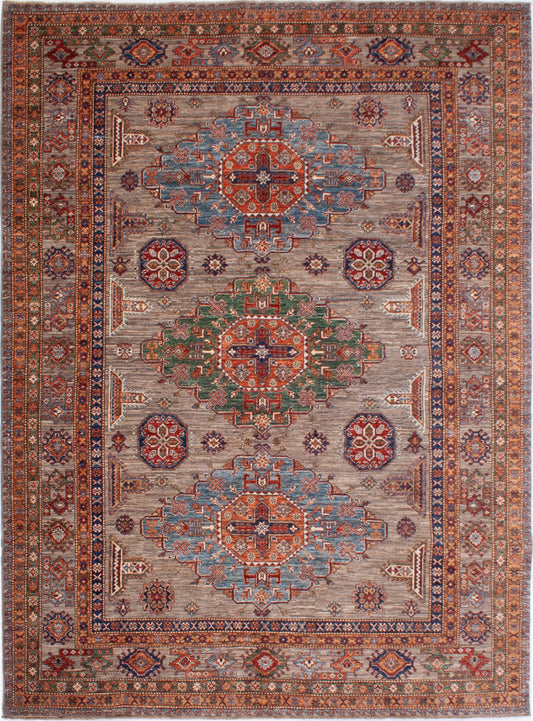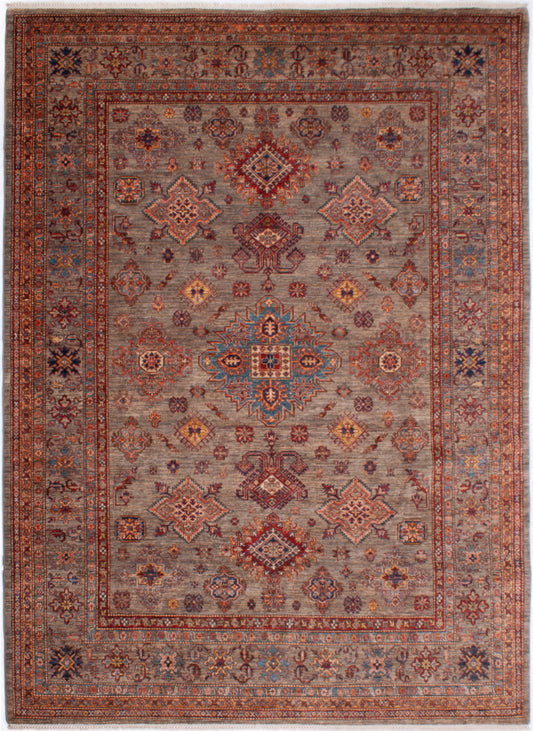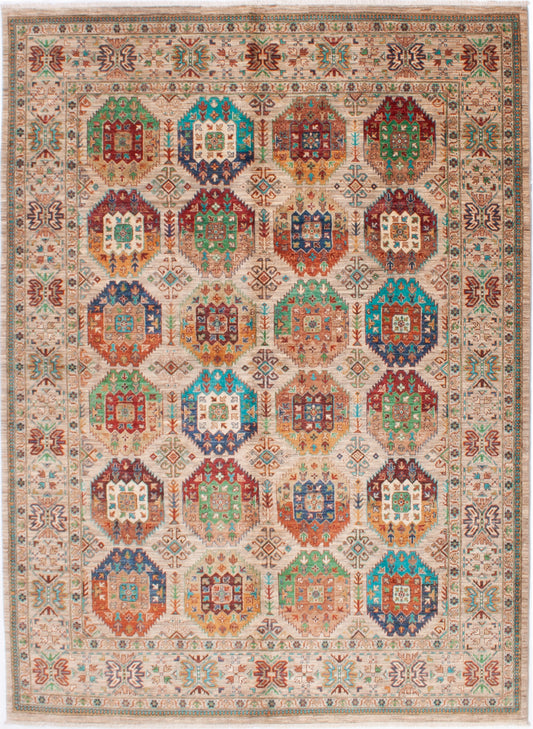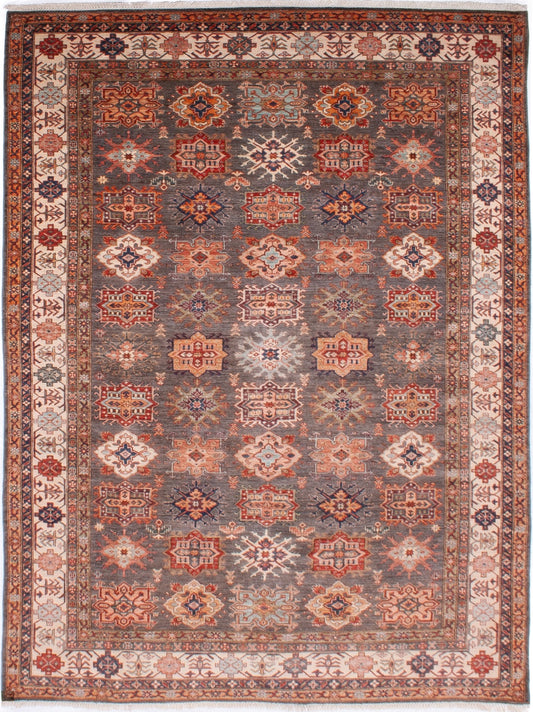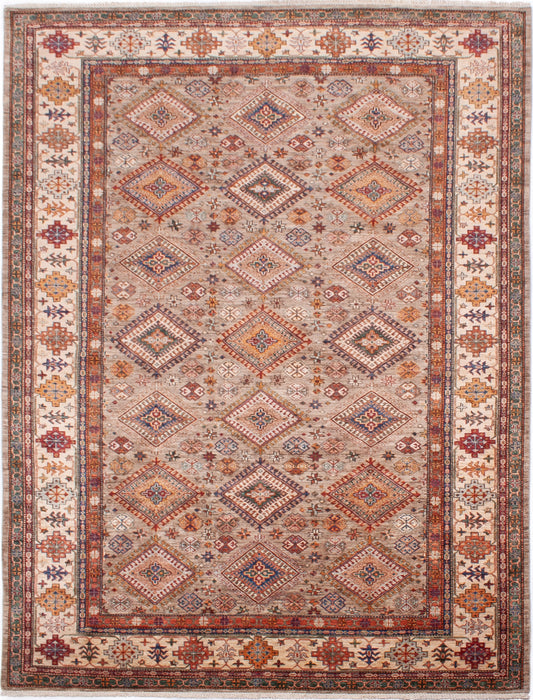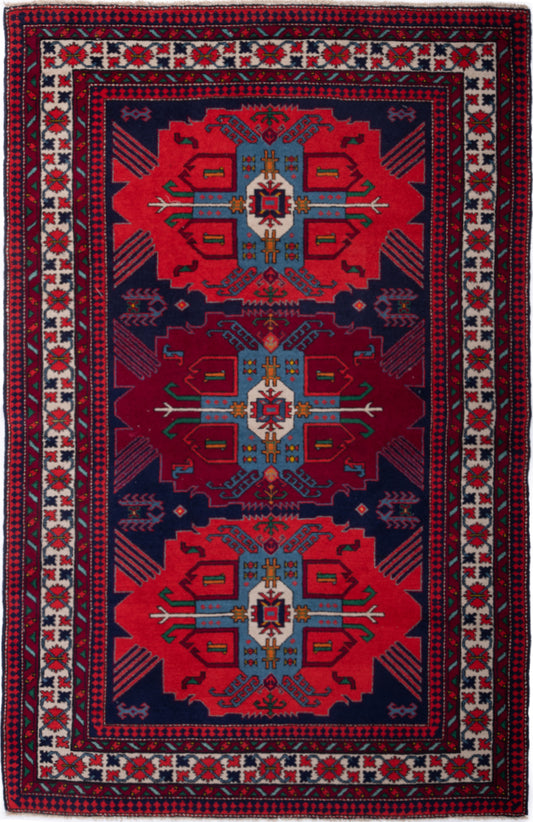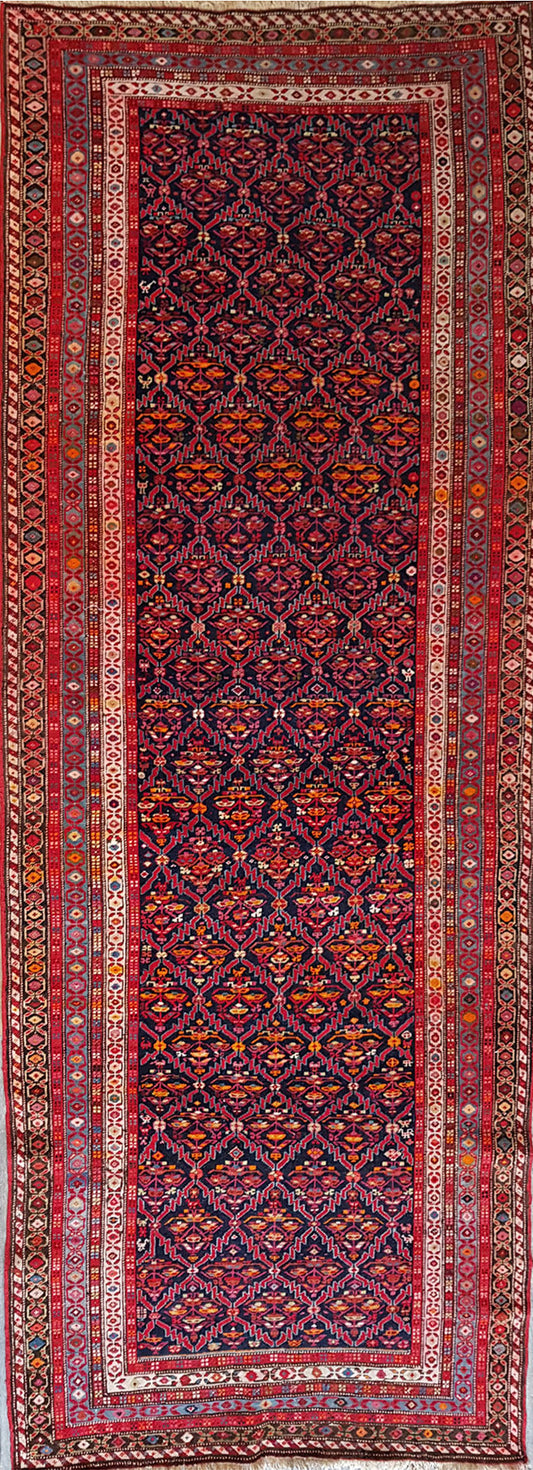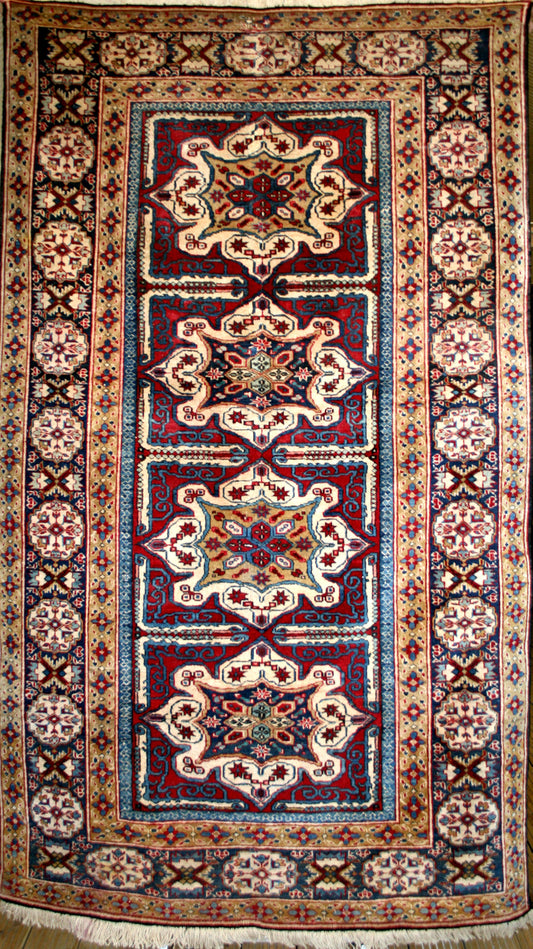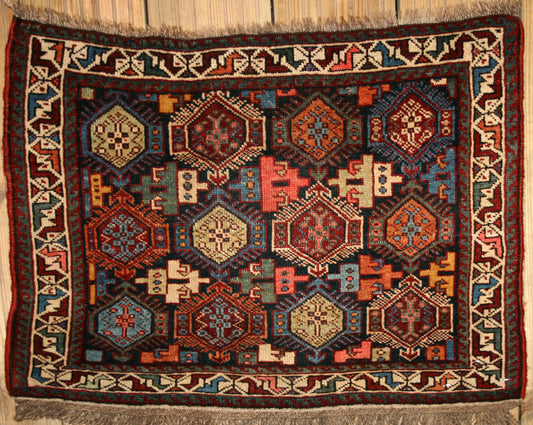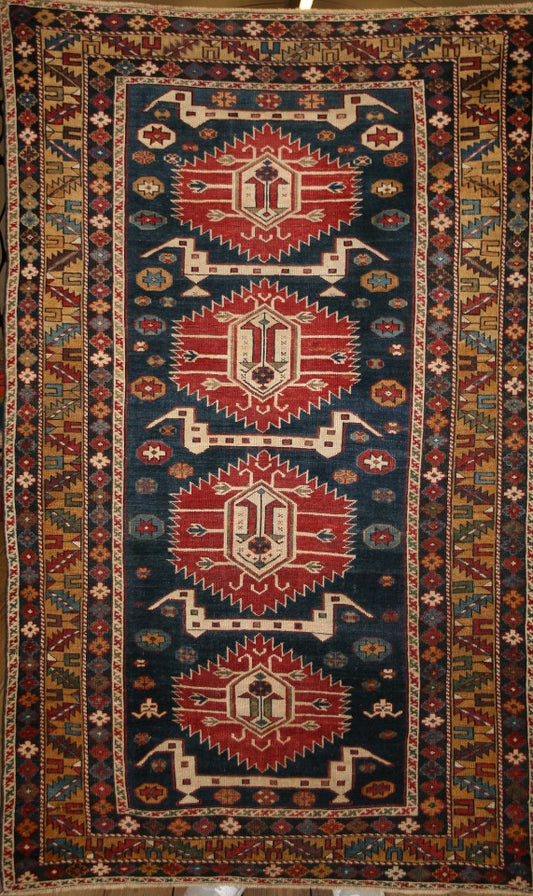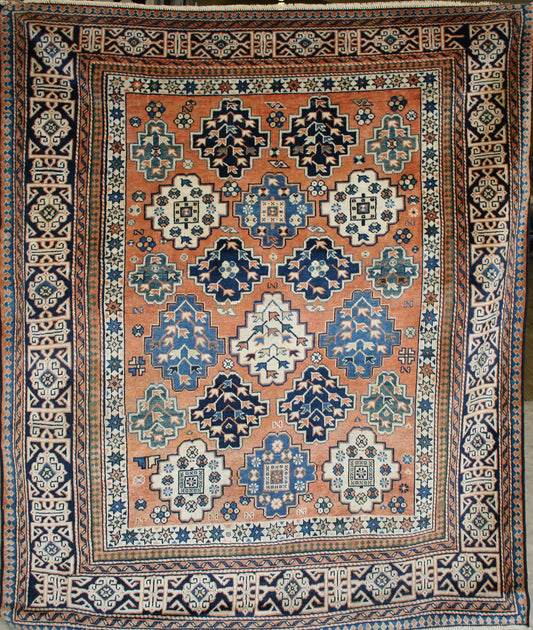Kazak Rug History & Origin Guide
Hand-knotted Kazak rugs are a testament to the rich history and skilled craftsmanship of the rug-making artisans of the Caucasus region. With their bold, geometric designs and vibrant colours, these rugs are not only beautiful works of art, but also a reflection of the diverse cultural influences that have shaped them over the centuries.
History of Kazak Design Rugs
Origins in the Caucasus region
Kazak rugs have their roots in the Caucasus region, an area that spans modern-day Armenia, Azerbaijan, and Georgia. The rugged, mountainous terrain and the influence of numerous cultures, including Persian, Turkish, and Russian, have contributed to the development of the unique and captivating designs that characterize Kazak rugs.
Influence of different cultures on design
The distinctive designs of Kazak rugs are a testament to the rich tapestry of cultures that have left their mark on the Caucasus region. Persian motifs, geometric Turkish patterns, and Russian-inspired floral designs all come together in a harmonious blend of artistry that is both visually striking and steeped in history.
Development of the Kazak rug industry over time
As the Kazak rug industry evolved over the centuries, rug-making techniques were honed and passed down through generations. The art of hand-knotting was perfected, giving rise to the intricate and durable rugs we know and admire today.
Types and Styles of Kazak Rugs
Kazak rugs are celebrated for their rich colours, bold geometric patterns, and striking motifs. Though Kazak rugs share common characteristics, there are several distinct types and styles that showcase the variety and creativity of these beautiful hand-knotted rugs. Here, we delve into some of the most prominent styles and motifs found in Kazak rugs:
1. Bordjalou Kazak Rugs
Bordjalou Kazak rugs are named after the Bordjalou region in the southern part of the Caucasus. These rugs typically feature a central medallion surrounded by smaller geometric motifs and a series of borders. Bordjalou rugs often employ a warm and vibrant colour palette, with dominant colours such as red, blue, and ivory. Common motifs include stylised animals, stars, and floral patterns, which are bold and eye-catching.
2. Sewan Kazak Rugs
Sewan Kazak rugs, also known as Shield Kazaks, originate from the Sewan region in the north-eastern part of the Caucasus. These rugs are known for their distinct geometric patterns and the use of a cruciform central medallion. Sewan Kazak rugs often exhibit a limited colour palette, predominantly using shades of red, blue, and yellow. The designs are characterised by the use of large, bold motifs, including geometric patterns, stylised animals, and floral elements, as well as the extensive use of latch-hook designs in the borders.
3. Karachopf Kazak Rugs
Karachopf Kazak rugs (also known as Karachop and Karachov) are defined by their unique central medallion, which features eight points and resembles a star or a flower. These rugs usually have a dark background with contrasting colours such as red, blue, green, and ivory used for the motifs. Karachopf rugs showcase a wide variety of motifs, including geometric patterns, stylised animals, and floral designs. The borders in Karachopf rugs often feature intricate, repeating patterns that add to the visual appeal of the rug.
4. Fachralo Kazak Rugs
Fachralo Kazak rugs are named after the Fachralo region in the central part of the Caucasus. These rugs are distinguished by their distinctive central medallion, which is often hexagonal or octagonal in shape. Fachralo rugs typically employ a rich colour palette, with red, blue, green, and ivory being the most common colours. The motifs in Fachralo rugs are varied, with geometric patterns, stylised animals, and floral designs being the most prevalent. The borders in these rugs tend to be wider than those in other Kazak styles and feature a series of alternating patterns.
5. Lambalo Kazak Rugs
Lambalo Kazak rugs originate from the Lambalo region in the Caucasus. These rugs are characterized by their unique patterns and motifs, often featuring a central medallion with a combination of geometric and floral elements. The colour palette of Lambalo Kazak rugs typically includes deep shades of red, blue, and green, with ivory and yellow accents. The borders are adorned with intricate patterns that complement the central design, adding to the rug's overall visual appeal.
6. Pinwheel Kazak Rugs
Pinwheel Kazak rugs are named for their distinctive pinwheel-like central medallion, which consists of several smaller geometric shapes arranged in a circular pattern. These rugs often feature a rich colour palette, with bold reds, blues, and greens being the most common shades. Pinwheel Kazak rugs showcase various geometric patterns and stylised floral motifs, creating a dynamic visual effect. The borders of these rugs often incorporate a series of alternating patterns, adding a sense of movement and depth to the design.
7. Shikli Kazak Rugs
Shikli Kazak rugs come from the Shikli region in the Caucasus and are known for their distinctive central medallion, which is typically elongated and features geometric patterns and stylised floral elements. The colour palette in Shikli Kazak rugs often includes deep reds, blues, and greens, with ivory and yellow accents. The borders in these rugs showcase intricate, repeating patterns that add a sense of harmony and balance to the overall design.
8. Shulaver Kazak Rugs
Shulaver Kazak rugs are named after the Shulaver region in the Caucasus and are characterized by their unique patterns, often featuring a series of geometric shapes arranged in a linear or diagonal configuration. The colour palette in Shulaver Kazak rugs typically includes vibrant shades of red, blue, and green, with ivory and yellow accents. The motifs in these rugs are bold and eye-catching, with geometric patterns, stylised animals, and floral designs being the most prevalent. The borders often feature intricate, repeating patterns that add to the rug's visual appeal.
9. Star Kazak Rugs
Star Kazak rugs are known for their striking central medallion, which features a large, geometric star pattern. These rugs often employ a rich and bold colour palette, with dominant colours such as red, blue, and green, and contrasting accents in ivory, yellow, or orange. Star Kazak rugs showcase a variety of geometric patterns and stylised floral motifs, creating a visually dynamic and engaging design. The borders of these rugs often incorporate a series of intricate, alternating patterns that add a sense of depth and movement to the overall design.
Modern Kazak Rug Production
Shift of production to Afghanistan
In recent years, the production of Kazak rugs has largely shifted to Afghanistan, where skilled artisans continue to honour the traditional designs and techniques that have defined these rugs for centuries. This shift has allowed for the preservation of the unique artistry and heritage of Kazak rugs, while also contributing to the economic revitalization of the Afghan rug industry. There are various grades of Kazak rug within the realms of Afghan weaving, including the superior Shirvan and Super Kazak ranges.
Impact on design and motifs
Though the production of Kazak rugs has largely moved to Afghanistan, the designs and motifs that have come to define these rugs remain true to their origins. Modern Kazak rugs continue to showcase the rich artistic heritage of the Caucasus region, while also incorporating contemporary design elements and colours that resonate with today's discerning buyers.
Importance of preserving traditional techniques
Preserving the traditional hand-knotting techniques used to create Kazak rugs is essential to maintaining their unique character and charm. By continuing to honour these age-old practices, modern artisans are ensuring that the rich history and artistry of Kazak rugs are passed down to future generations.
Innovations in materials and production processes
While the traditional techniques used to create Kazak rugs remain integral to their production, innovations in materials and processes have allowed for improvements in quality and sustainability. The use of natural dyes and high-quality wool ensures that modern Kazak rugs are both beautiful and long-lasting, making them a wise investment for any home or collection.
Conclusion
Hand-knotted Kazak rugs have captivated collectors and admirers for centuries with their striking designs and rich cultural heritage. Their enduring appeal lies not only in their beauty but also in the skilled craftsmanship and history that each rug represents.
As we embrace the artistry of Kazak rugs, it is vital that we continue to preserve and celebrate their unique heritage. By supporting the artisans who carry on the tradition of hand-knotting and honouring the rich history behind each rug, we ensure that the legacy of Kazak rugs will continue to enchant and inspire for generations to come. Explore our extensive collection of Kazak rugs to discover the perfect focal point or piece of history for your home.
Browse Our Current Selection of Kazak Rugs
-
Afghan Super Kazak Rug
Regular price £4,225.00Regular priceUnit price per -
Afghan Super Kazak Rug
Regular price £4,475.00Regular priceUnit price per -
Afghan Super Kazak Rug
Regular price £4,375.00Regular priceUnit price per -
Afghan Super Kazak Rug
Regular price £5,025.00Regular priceUnit price per -
Afghan Super Kazak Rug
Regular price £5,175.00Regular priceUnit price per -
Semi-Antique Shirvan Rug
Regular price £1,475.00Regular priceUnit price per -
Antique Caucasian Shirvan Runner Rug
Regular price £7,975.00Regular priceUnit price per -
Caucasian Shirvan Runner Rug
Regular price £2,395.00Regular priceUnit price per -
Semi-Antique Caucasian Shirvan Rug
Regular price £4,995.00Regular priceUnit price per -
Antique Caucasian Shirvan Rug
Regular price £595.00Regular priceUnit price per -
Antique Caucasian Shirvan Rug
Regular price £5,245.00Regular priceUnit price per -
Antique Caucasian Shirvan Rug
Regular price £2,995.00Regular priceUnit price per

